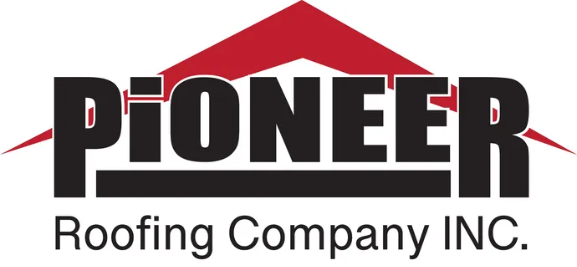Quality Work Backed by a Quality Company
At Pioneer Roofing Company, Inc., quality isn’t just a promise — it’s a tradition built over 50 years of craftsmanship and care. Every project we complete reflects our unwavering commitment to superior workmanship, premium materials, and honest service. We believe that a roof should not only protect your home but also stand as a testament to skill and pride in a job well done. From careful installation to dependable follow-up service, our customers can count on reliability, respect, and results that last. When you choose Pioneer Roofing, you’re choosing quality work backed by a quality company — one that stands behind every roof we install.

Types of Roof Materials
- Modified Bitumen
- EPDM
- Coatings
- Single-Ply TPO, PVC
- Asphalt
- Metal
Roof Systems
Roof systems and materials generally are divided into generic classifications: low slope and steep slope.
Flat/Low-Slope Roofing
Typically less expensive to install than sloped roofs, flat roofs require a lot of maintenance. Roof coating will extend the life of flat roofing and slow down its degeneration. Low-slope roofing will last up to 15 years.
The five most common low-slope or flat roofing systems are
- Built-up Roof (BUR) Membranes
- Polymer-Modified Bitumen Sheet Membranes
- Thermoplastic Membranes (e.g., PVC, TPO)
- EPDM
Most low-slope roof membranes have three principal components: weatherproofing layer or layers, reinforcement, and surfacing.
Steep-Slope Roofing
- Asphalt Shingles— The most common and least expensive roofing material in the United States, asphalt shingles are easy to install and come in a variety of styles and colors, working well with many architectural styles, especially traditional suburban styles. Lightweight and fire-resistant, asphalt shingles can be installed over an existing roof. Depending on location, quality of material, and installation, shingle roofs last anywhere from 20 to 25 years—20 to 25 years for three-tab, 30 to 40 years for architecture.
- Metal Roofing—Available in aluminum, copper, stainless steel, and zinc, metal roofs are lightweight, durable, long-lasting, environmentally friendly, energy-efficient, and resistant to extreme weather conditions. Metal roofing can be expensive, but it requires low maintenance and can be installed over an existing roof. It typically lasts 25 to 50 years.
Modified Bitumen Roofing
One of the longer-lasting roofing options for a flat roof is bitumen roofing or a modified bitumen roof. Modified bitumen is a type of asphalt product that can be applied in several ways to the roof in both hot and cold temperatures. Modified bitumen roofs have a lot of advantages over other types of membrane roofing, and we are often seen as the modern alternative to the built-up roof.
What is EPDM (Rubber) Roofing?
Ethylene Propylene Diene Monomer is a single-ply membrane that consists of a synthetic rubber compound that allows it to be flexible. EPDM has been used on commercial roofing facilities since the 1960s and is considered a time-tested option.
With EPDM, you have an option of choosing from 45, 60, or 90 mils thickness and either black or white for the color. While TPO has a natural white color, EPDM results in a dark gray or black color for your roof. The darker color is not helpful in reflecting UV rays; it does retain heat for those in cooler weather.
EPDM rubber is a type of synthetic rubber. It is extremely durable and flexible and therefore has a wide range of applications, including in vehicles (where it is used for window and door seals, as well as cooling system hoses), cold rooms, non-slip coatings for decks and playgrounds, and many others. In simple terms, pure rubber becomes brittle with temperature variables, whereas synthetic rubber (EPDM) remains flexible and withstands temperature variations for decades.
The use of EPDM in roofing is what we will be exploring in this feature. This material lends itself incredibly well to roofing systems due to its unique combination of material properties. We will expand on this in this article and in our Why Use EPDM? guide (coming soon).
EPDM is a copolymer with elastomeric properties, which means it is a polymer that is both viscous and elastic. If stretched, it will return to its original shape. Its two main components (ethylene and propylene) are both derived from oil and natural gas.
Types of Roofs Available from Pioneer Roofing for Your Roofing Project
Why Choose an Asphalt Cool Roof Restoration System From ERSystems?
- Restoration costs may be as low as 20% of total tear-off and replacement costs; materials are easily applied.
- Makes the inconvenience, risk, and environmental implications of a roof tear-off unnecessary.
- Restoration may be expensed, while roof replacement must be capitalized.
- ERSystems coatings are adaptable to asphalt and modified bitumen roofs.
- Excellent resistance to dirt pickup.
- Repairs are fast and economical.
- Stop further roof deterioration and reduce future maintenance costs.
- Bring your building back under a Class 1 rating.
Types of Single-Ply Roofing
Single-Ply Is Wide-Width Sheeting Meant for Low Slope Roofs.
Single-ply roofs have far fewer seams than asphaltic rolled roof systems and don’t require dangerous torches or hot asphalt for installation. They also come with prefabricated detailing accessories that make installation easy.
TPO
The most popular product in commercial roofing, thermoplastic polyolefin (TPO), is the most economical choice in heat-weldable membranes. TPO offers ease of welding for seaming and detailing. It’s highly reflective and can help reduce air conditioning costs.
PVC
What is PVC roofing? Made from polyvinyl chloride (or in layman’s terms, plastic), PVC is a great single-ply roofing solution. It’s made from a lower percentage of oil and petroleum than thermoplastic polyolefin (TPO) or ethylene propylene diene terpolymer (EPDM). As a cool roof membrane, it carries both Energy Star and Cool Roof ratings.
LEARN MORE ABOUT THE TYPES OF ROOFS WE WORK WITH BY CONTACTING US TODAY!







